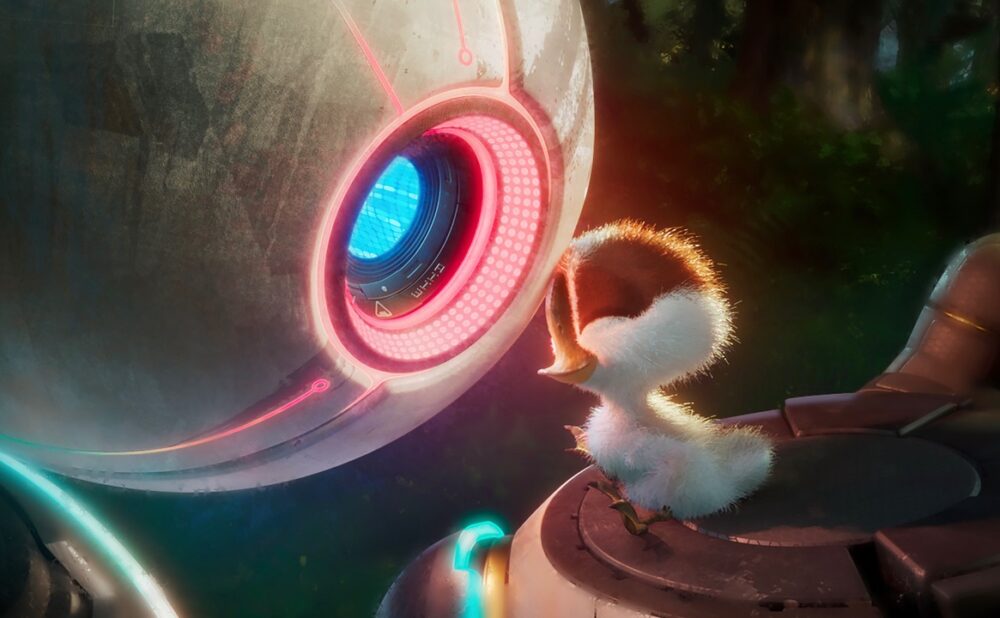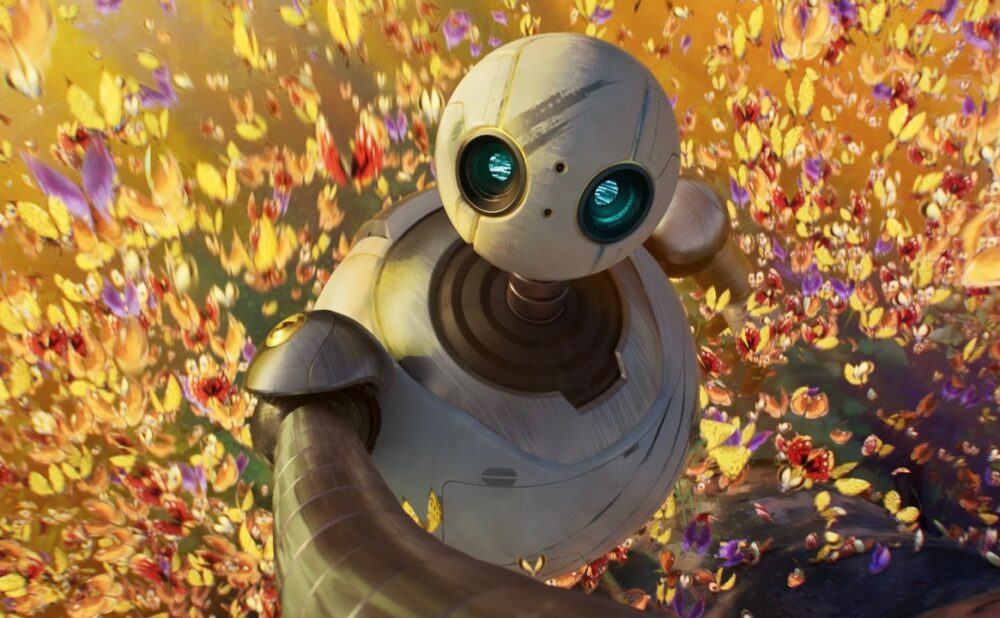Review: “The Wild Robot” offers a hopeful dystopia
Gorgeous animation highlights wholesome tale
The Wild Robot
What: Movie, 102 mins.
When: Fri., Sept. 27
Where: In theatres
Genre: Family
Rating: NNNN (out of 5)
Why you should go: In the early days of the COVID-19 lockdowns, images of wild animals walking around city streets made the rounds online. They were surreal and also hopeful, suggesting that despite all that humans have built, the natural world can always reclaim it.
THE WILD ROBOT (written and directed by Chris Sanders) takes place in a future where it seems much of human infrastructure has collapsed, but the natural world lives on in all its wildness — animals exist according to their ancient instincts in untouched landscapes. It’s into this beautiful and sometimes brutal environment that an advanced helper robot named ROZZUM 7134 — friends learn to call them Roz (Lupita Nyong’o) — crashes.
In this unfamiliar terrain, full of dangers Roz isn’t confused by the rough, unpredictable land (among Roz’s many gifts is an effortless physical adaptability) but by the absence of humans to help. After trying to be useful to the animal inhabitants who mistrust them, Roz finds themselves burdened with a nearly impossible task: raise a diminutive, orphaned gosling (Kit Connor) that has imprinted on them. Roz enlists the help of a few forest dwellers, including a sly and lonely fox (Pedro Pascal), an overburdened mother possum (Catherine O’Hara) and a wise elder goose (Bill Nighy).
While there is camaraderie in the forest, The Wild Robot is refreshingly frank about mortality in the wild, and animals are dispatched by predators without much emotion (these scenes are not as grim as I am making them sound and are actually quite funny). In the film, it’s the world of humans (and other robots) that’s cold and unfeeling. Roz is different than other robots because they rise above their programming; their intelligence is matched by their sensitivity, and they experience joy, confusion, love, heartbreak …
Nyong’o brings ample personality to Roz, even in their most programmed dialogue. The tendency of animated films to stack their cast with Oscar winners and TV personalities can be distracting (nothing pulls you out of a story more than trying to guess which celebrity voice is behind which creature), and The Wild Robot is no exception. But there are some great performances, including Matt Berry as a cantankerous beaver and Stephanie Hsu as the sinister robot Vontra.
The animation is lovely, particularly when handling different tones of sunlight in the forest and Roz’s wonderful transformations, like a high-tech Inspector Gadget. The film looks both digital and painterly, fitting for a technology-meets-nature fable.
The Wild Robot is a fable, but what exactly it’s trying to say in a larger sense is unclear: Is the story a parable for climate change, AI or both? Do the animals represent humankind or are we the robots? The film preaches growing past our programming, but doesn’t that contradict its call to embrace our wild nature?
This lack of coherence in theme prevents the film from gelling completely, but it delivers so well on inventiveness, humour and very cute woodland friends that it won’t be an issue for most of the creatures in the audience.







